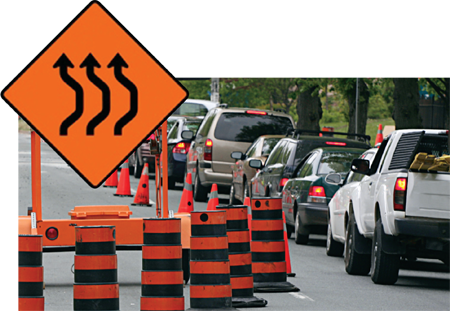Today’s blog is about building our rapidways. But to kick things off, here’s a question for those of you who’ve ever had to paint a room, or lay down a new floor. What’s easier: working in your kitchen that has to be used every day and is filled with stuff, or in an empty room in the basement that no one goes into? That may seem like a pretty silly question, with a really obvious answer. But I’m asking it to give you a sense of the biggest challenge our rapidway construction contractors are up against as construction gets going: how to work in a confined, busy space that’s open for business 24/7 – meaning our roadways.
Modern roadway building is a well understood process, following clearly defined steps, and using modern technology, equipment and materials. And in York Region, where we are fortunate to have access to some of the best, most experienced construction contractors anywhere, people really know what they’re doing. So building a rapidway is – in some ways – a very straightforward project. Straightforward, that is, until you realize that the rapidways are being built down the middle of some of the most congested stretches of road in the GTA. And that it’s critical to minimize wherever possible the impact on people using the roadway, including keeping travel lanes open during construction. And that there’s no extra room down the outside of the road to widen the working space. That’s when things get more challenging. This is where the concept of “construction staging” comes in, meaning doing the work in specific phases or steps to manage within the available space.
The first step in rebuilding a road in an existing roadway (as we’re doing when we build a rapidway) is to create some extra room to put our construction crews. For the safety of both the public and our construction crews, construction needs to happen in its own separate space; excavators need to swing their buckets, we need a place to bring in concrete, and trucks need room to back up. So finding that room is the first challenge. Our approach is to take out the median, narrow each of the lanes and shift them over by repainting the lines. We will then work in the extra space that’s been freed up, constructing all along one stretch before we move to the next.
Once one side of the road is done, we’ll then repaint the lanes to shift the lanes back, then begin work on the other side, working in stages along the entire segment. Think of our kitchen example; it’s like putting down a new floor in your kitchen – you do one side, then move your fridge and stove over to the completed side so you can do the other half.
There’s no doubt that road building would be a lot easier and a lot faster if we could just block it off and do the full width all at once. Working around traffic means work progresses more slowly; we have to use smaller equipment, construction trucks get caught in traffic, and every stage takes longer. For example, paving requires only a few hours, but new pavement can’t have traffic on it right away, so we need to time the paving work carefully so it isn’t done during the most congested times of the day.
And sometimes you may get the feeling that we’ve returned to an area even though it seemed like we were finished. In fact, what you’re seeing is that we are coming back to complete additional steps which have to be done in a certain order. As much as possible, we like to get all the work done in one segment before we move on to the next. This is all part of staging, where work is done in small, careful steps.
And just as you wouldn’t be able to live without your kitchen while you renovate, we will keep our roads open during the project, relying on staging to minimize the impact of our work while we get it done as quickly as possible.

